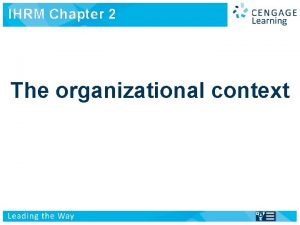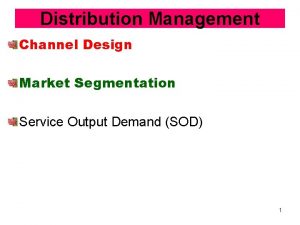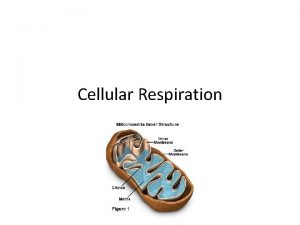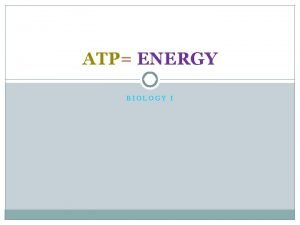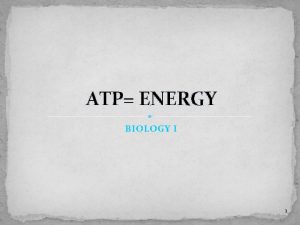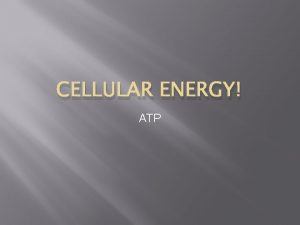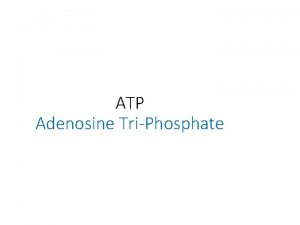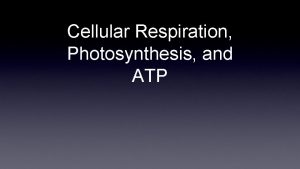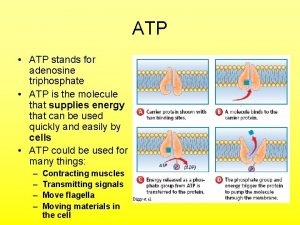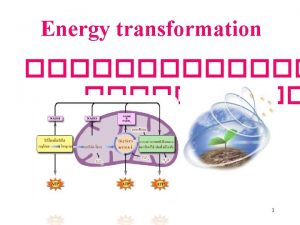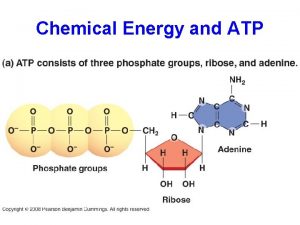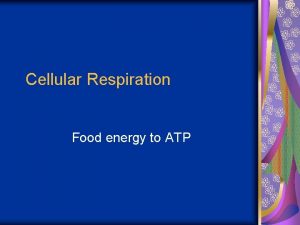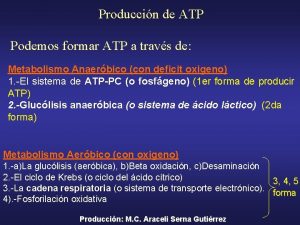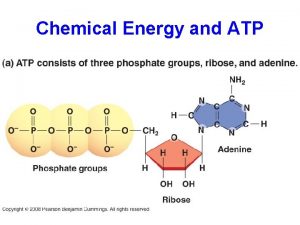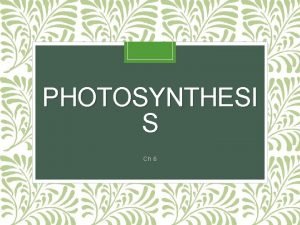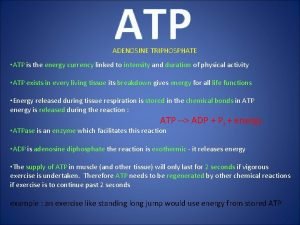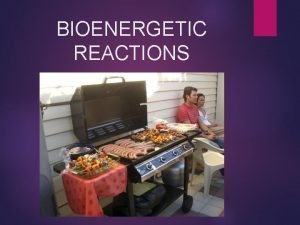1 A Model for assessing ATP demands of






















- Slides: 22

1 A Model for assessing ATP demands of sustained high frequency firing u. Ottawa. ca Béla Joos, Catherine E. Morris (OHRI) Biology collaborators: John Lewis –U Ottawa Michael Markham – U Oklahoma

2 ELECTRIC ORGAN DISCHARGE (EOD) oscillating dipole produces electric fields whose distortions the fish senses. Focus? – e-discharge mechanisms (not sensing) Solid- equipotential Dashed – field lines u. Ottawa. ca Currents flow same pattern as the flipping electric fields (Ohm’s law --i. e. , current flow varies with “voltage drop”)

3 Electric eel (tetanic contracture of prey) Stuns the fish before eating it But our interest is in weakly electric fish which produce electric organ discharges continuously throughout their lifetime. u. Ottawa. ca

Eigenmannia -- a weakly electric fish electric organ -- thousands of massive (~1 mm) electrocytes derived from fused “muscle” cells (syncytium ~30, 000 nuclei) – the EOD requires synaptic input from the Central Nervous System pacemaker 4 Posterior (P): Navs and Kvs generating APs Anterior (A): Capacitive role u. Ottawa. ca

5 Lewis, Gilmour, Moorhead, Perry, Markham 2014 J Neurosci 34: 197 Action potential energetics at the organismal level reveal a trade-off in efficiency at high firing rates. • Eigenmannia EOD – synchronous tonic APs – never stop! • major fraction of whole animal metabolism. • EOD + electric sensing: navigate, communicate, locate prey. • Jamming Avoidance Response (JAR) – CNS-controlled ∆AP frequency when a conspecific using a similar freq is nearby (average JAR: ∆ ~10 Hz – easily measurable) - whole fish respirometry (flasks) - exploit JARs to estimate ATP consumed per AP – HOW? First, measure background O 2 consumption, then “fake” a conspecific. This elicits a sustained change in AP frequency (EODs monitored throughout). u. Ottawa. ca

6 Lewis et al. , 2014 Their major expt’l result: ATP/Hz is NOT fixed EODs cost grows exponentially with freq --- the respirometry data summarized by the ATP/Hz slope (semi-log plot) MOREOVER – the incremental costs in ATP/Hz determined by eliciting JARs in 6 fish with very different baseline EOD frequencies concurs. SO – tenor = cheap, soprano = “expo”-expensive (remember … semi-log plot) Our aims: design the generation of action potentials (APs) by electrocytes and explain the frequency dependence of the energy requirements u. Ottawa. ca tenor ⇾ ⇾ soprano

7 We designed a model consistent with available experimental data. Today we will focus on the posterior end which drives the electric organ discharge. A Hodgkin Huxley type model which calculates the changes in membrane voltage as ions flow in and out of the electrocyte’s posterior face. u. Ottawa. ca Each current has its own kinetics either voltage driven (Nav, Kv) or ligand driven (ACh. R)

8 one action potential the kinetic variables the ion currents from voltage gated Nav and Kv channels u. Ottawa. ca

9 Increase in ATP measured as a Na entry* demand not exponential less than a factor 2 over the relevant range of frequencies. It is difficult to conceive that the observed exponential increase would arise from the generation of AP So where does it come from? Na+ has to be pumped out which requires ATP * u. Ottawa. ca

10 The increased demand of ATP based on Na+ entry is a result of overlap of action potentials u. Ottawa. ca

11 The high measured increase in cost has then to arise from increased demands related to generating high frequency stimulus Phillips et al , Molecular Biol. of the Cell Reaction-diffusion process where ACh released by vesicles diffuse across the gap partly intercepted by acetylcholinesterase. But others reach the posterior end of the electrocyte attaching to ACh. R leading to stimulating current initiating the action potential. Khaliq et al, J. Neurosci. 2011 u. Ottawa. ca

12 Fish shift their frequency when close to a conspecific. We show that this could be accomplished without the need to adjust their ion conductances u. Ottawa. ca

13 What is next? • Whole electrocyte model • Modeling the synaptic transmission: how the synapse is designed to permit firing frequencies up to 1000 Hz or periods of the order of 1 ms u. Ottawa. ca

14 Summary • Many electric fish are capable of producing oscillating electric dipoles generated by columns of electrocytes (derived from muscle cells) • The action potentials (APs) are similar to those of neurons (Nav, Kv, and Na/K pumps) but are generated at very high frequencies (200 -500 Hz in Eigenmannia, but in other fish up to a 1000 Hz) • The ATP cost of generating electric organ discharges increases as a power law with increased frequency contrary to the observed exponential increase indicating that the cost of providing the brain stimuli leading to the synaptic transmissions is high. • Still need the operation of the full electric organ and that of synaptic transmission u. Ottawa. ca

Eigenmannia -- a weakly electric fish electric organ -- thousands of massive (~1 mm) electrocytes derived from fused “muscle” cells (syncytium ~30, 000 nuclei) – the EOD requires synaptic input from the CNS pacemaker 15 Posterior (P): Navs and Kvs generating APs Anterior (A): Capacitive role u. Ottawa. ca

16 2014 u. Ottawa. ca

17 AP generation in a single electrocyte Posterior (P): Navs and Kvs generating APs Anterior (A): Capacitive role VA =potential at anterior end wrt to outside VP =potential at posterior end wrt to outside CA ≈ 18 n. F with invag. 7. 5 x larger CP ≈ 48 n. F Equivalent circuit u. Ottawa. ca Rgap= gap resistance Rcyt= cytoplasma resis. Rcell= Rgap+Rcyt Rext= external load VA= V 2 -V 1 VP= V 3 -V 4

18 A full EOD cycle as seen from one electrocyte (in the steady state) 500 Hz spike shown 1. - Influx of Na+ at P (current IP < 0), outflow of K+ (IP > 0) VP (blue) VA (green) IE IP 2. - an AP is generated at P. VA stays nearly constant: successive APs have charged up the capacitive membranes at A to VA. u. Ottawa. ca 3. - When VA > VP current IE is head negative, then as VA < VP it becomes head positive

19 u. Ottawa. ca

20 Proposed model for posterior generation of action Constant activation of ACh. Rs potentials would elicit high frequency APs over a wide Hz range(as shown), depending on [ACh]. BUT any small ∆[ACh] would cause ∆Hz & thus, failed communication /sensing. To ensure firing at “desired” Hz, in spite of [ACh] vagaries, fish likely mixes subthreshold [ACh] + pulsatile ACh. Here (idealized case, i. e. no [ACh] noise) desired Hz (blue) is achieved once pulsatile component is sufficiently large. u. Ottawa. ca

21 Summary • Many electric fish are capable of producing oscillating electric dipoles generated by columns of electrocytes (derived from muscle cells) • The action potentials (APs) are similar to those of neurons (Nav, Kv, and Na/K pumps) but are generated at very high frequencies (200 -500 Hz in Eigenmannia, but in other fish up to a 1000 Hz) • The ATP cost of generating electric organ discharges increases as a power law with increased frequency contrary to the observed exponential increases indicating the high cost of providing the brain stimuli ending with the synaptic transmissions. • Still need the operation of the full electric organ and that of synaptic transmission u. Ottawa. ca

22 u. Ottawa. ca
 Demands and capacities model
Demands and capacities model Principles of individuality
Principles of individuality Needs wants and demands
Needs wants and demands Marketing more than any other business function deals with
Marketing more than any other business function deals with Sample letter of inventory report
Sample letter of inventory report Management demands of international growth
Management demands of international growth Don't delay dawns disarming display
Don't delay dawns disarming display Sadlier unit 12 level b synonyms
Sadlier unit 12 level b synonyms Service output demand
Service output demand Paralinguistic demands
Paralinguistic demands Management demands of international growth
Management demands of international growth Mips processor
Mips processor When backed by buying power, wants become demands.
When backed by buying power, wants become demands. Building basic health skills
Building basic health skills Assessing risk in sport regulatory bodies
Assessing risk in sport regulatory bodies Unit 18 assessing children's development support needs
Unit 18 assessing children's development support needs Teaching and assessing grammar in the writing classroom
Teaching and assessing grammar in the writing classroom Difference between ncbts and ppst
Difference between ncbts and ppst Task analysis in hrd
Task analysis in hrd Disadvantages of formal assessment
Disadvantages of formal assessment Aashto manual for assessing safety hardware
Aashto manual for assessing safety hardware Cultural dynamics in assessing global markets
Cultural dynamics in assessing global markets Assessing a new venture's financial strength and viability
Assessing a new venture's financial strength and viability





